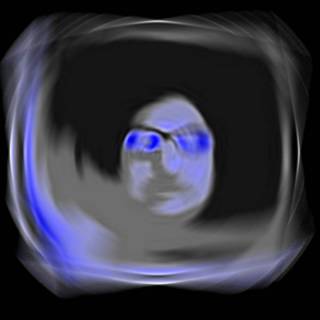November 18, 200
4A BUZZFLASH NEWS ANALYSIS
BuzzFlash was a telephone media participant in a 10 AM (Pacific Time), November 18th, news conference conducted by the Survey Research Center of the University of California at Berkeley.[LINK] This is our report. A research team at UC Berkeley reported Thursday morning that irregularities associated with electronic voting machines may have awarded 130,000 - 260,000 or more in excess votes to President George W. Bush in Florida in the 2004 presidential election. The study showed an unexplained discrepancy between votes for President Bush in counties where electronic voting machines were used versus counties using traditional voting methods. Discrepancies this large or larger rarely arise by chance -- the probability is less than 0.1 percent. The research team, led by Sociology Professor Michael Hout, formally disclosed the results of the study at a press conference and called for an immediate investigation by Florida officials“The three counties where the voting anomalies were most prevalent were also the most heavily Democratic counties, not the [conservative] Dixiecrat counties you’ve all heard about before, but the more heavily Democratic counties that used e-vote technology, including Broward, Palm Beach, and Miami-Dade counties in order of magnitude,” said Professor Hout. The statistical patterns in counties that did not have e-touch voting machines predicted a 28,000 vote decrease in President Bush’s share of the 2004 vote in Broward County, but the machines actually tallied an increase of 51,000 votes for a net gain of 81,000 votes for the President. With the research team’s statistical model, it was expected that President Bush should have lost 8,900 votes in Palm Beach County but instead he gained 41,000, a difference of 49,900 votes. And President Bush should have gained only 18,000 votes in Miami-Dade County but in fact gained 37,000, for a difference of 19,300 votes. “The disparity in favor of the incumbent President Bush cannot be explained away by other factors. The study shows that counties that used electronic voting resulted in disproportionate increases of votes for the President,” said Professor Hout. Furthermore, statistical adjustments for the size of the counties, the number of votes cast, income, ethnicity and other factors, do not explain or account for the discrepancy why the President received so many votes in heavily democratic counties that used electronic voting. Hout made this appeal: “For the sake of all future elections involving electronic voting, someone needs to explain the statistical anomalies that we found in Florida. We’re calling on officials in Florida to take up this task and to take action now.”
4A BUZZFLASH NEWS ANALYSIS
BuzzFlash was a telephone media participant in a 10 AM (Pacific Time), November 18th, news conference conducted by the Survey Research Center of the University of California at Berkeley.[LINK] This is our report. A research team at UC Berkeley reported Thursday morning that irregularities associated with electronic voting machines may have awarded 130,000 - 260,000 or more in excess votes to President George W. Bush in Florida in the 2004 presidential election. The study showed an unexplained discrepancy between votes for President Bush in counties where electronic voting machines were used versus counties using traditional voting methods. Discrepancies this large or larger rarely arise by chance -- the probability is less than 0.1 percent. The research team, led by Sociology Professor Michael Hout, formally disclosed the results of the study at a press conference and called for an immediate investigation by Florida officials“The three counties where the voting anomalies were most prevalent were also the most heavily Democratic counties, not the [conservative] Dixiecrat counties you’ve all heard about before, but the more heavily Democratic counties that used e-vote technology, including Broward, Palm Beach, and Miami-Dade counties in order of magnitude,” said Professor Hout. The statistical patterns in counties that did not have e-touch voting machines predicted a 28,000 vote decrease in President Bush’s share of the 2004 vote in Broward County, but the machines actually tallied an increase of 51,000 votes for a net gain of 81,000 votes for the President. With the research team’s statistical model, it was expected that President Bush should have lost 8,900 votes in Palm Beach County but instead he gained 41,000, a difference of 49,900 votes. And President Bush should have gained only 18,000 votes in Miami-Dade County but in fact gained 37,000, for a difference of 19,300 votes. “The disparity in favor of the incumbent President Bush cannot be explained away by other factors. The study shows that counties that used electronic voting resulted in disproportionate increases of votes for the President,” said Professor Hout. Furthermore, statistical adjustments for the size of the counties, the number of votes cast, income, ethnicity and other factors, do not explain or account for the discrepancy why the President received so many votes in heavily democratic counties that used electronic voting. Hout made this appeal: “For the sake of all future elections involving electronic voting, someone needs to explain the statistical anomalies that we found in Florida. We’re calling on officials in Florida to take up this task and to take action now.”














0 Comments:
Post a Comment
<< Home